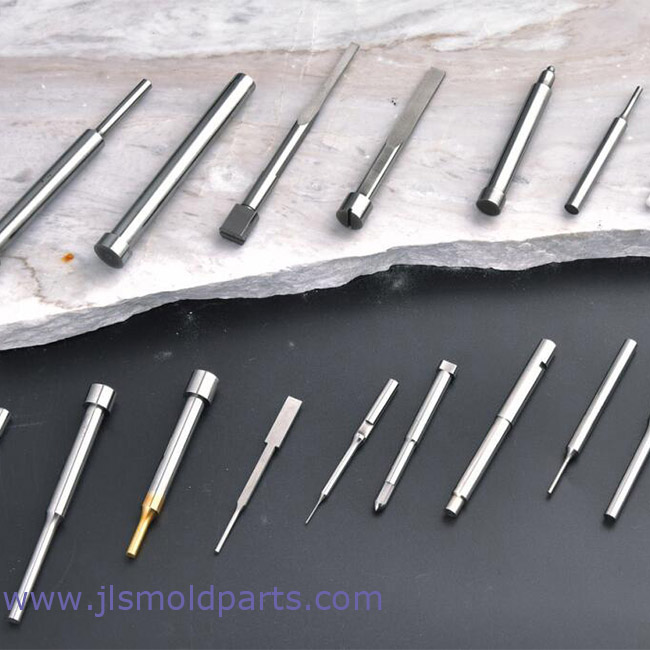
There are five factors that can increase tool life and profitability, ensuring fabricators get the most out of their carbide punch tools, avoid tool wear, and punch proper shapes.
To get the most out of your punching tools, avoid tool wear, and punch proper shapes, take a look at the following five factors.
1.Proper Alignment
One of the biggest mistakes fabricators make is not ensuring their turret stations are properly aligned and in good working order, not only positionally but angularly towards what is being punched. If the station is in good alignment but is turned by half a degree, nibbling or punching out a straight line, say with a rectangular tool, will cause a saw-tooth effect with every hit made. As time passes, this saw-tooth effect will result in uneven wear on the tool, breaking down the cutting edge.
Nibbling creates side loading, where the punch starts to come down and only a portion of the tool hits the material. Most of the tool is left unsupported, which causes the tool to pull to the unsupported side, causing a breakdown of the punch point.
If you are going to nibble, experts recommend using fully guided tool with a stripper designed with a tighter clearance to keep the precision carbide punch point vertical when penetrating through the sheet. This is especially good for small holes in thick material or nibbling.
2.Treatments and Coatings
Coatings and treatments are a great way to extend punch life and decrease galling. Coating is one of the easiest ways to get the most out of your punching tools. Several different tool treatments and coatings are available, such as a nitride treatment in which nitride is infused into the punch point.
That helps with making the punch more slippery as it is punching through and pulling out of the material. Coatings such as zirconium, titanium, and nitride are applied in multiple, thin layers onto the punch point. That adds lubricity and helps keep the punch point cooler for high-hit applications that are subject to heat buildup on the punch.
3.Correct Die Clearance
The right clearance is critical, It has a huge bearing on the stress factor on the tooling, and not to mention the finish on the hole itself.
If you aware the appearance of burr, this is a good indicator that the die clearance is incorrect. Too much die clearance will cause the material to roll over and stretch, creating a downward edge or burr. If the clearance is too tight, this can result in extreme stress on the tool, with the punch stripping out of the pierced hole.
When you have proper die clearance, you get better stripping and a smaller burr, and die clearance is material-dependent. With stainless, fabricators would typically adjust the die clearance to 25 percent of the material thickness. With mild steel and some types of aluminum, the die clearance is less than stainless, about 20 percent, depending on what is being punched out.
4.Sharp Tools
Having a sharp tool can make all the difference in punching hole quality. The easiest way to know when your tool needs to be sharpened is by feeling it. If it’s dull, then it needs sharpening. you can also tell by the quality of the hole if there is rollover on the edge of the punch, which could be an indication of a dull tool. A distorted hole also can show signs of the punch breaking down. For example, a round hole that starts looking egg-shaped could indicate that one side of the tool is breaking down before the other.
You can hear the difference when the punch is hitting a sheet when it is starting to get dull, it is recommended that fabricators sharpen their tools more frequently rather than punching away until they are extremely dull.
It’s better to sharpen more often and take minimal material off each time. This will drastically increase tool life. For example, in side-by-side testing of the same tools in the same application, sharpening more frequently can improve tool life exponentially.
For sharpening, using a good coolant is essential. If you sharpen without coolant, the heat buildup can change the characteristics of the material, weakening the tool. And use a good grinding wheel and consistent speeds to feed the tool in and out.
Once you’ve finished sharpening, it is essential that you demagnetize your tools. When they become magnetized, they attract any carbon-type debris. Any extra dust or debris on the tool increases the amount of wear. You are essentially punching through extra garbage.
After tool sharpening, you may see a burr at the edge of the punch point. To get rid of this, use a soft abrasive stone to break off the material. It will leave a clean edge with a minimal radius. With dies, after sharpening, use die shims to make sure they are set back to right height to ensure you have the right punch penetration all the way across the board.
5. Lubrication
Some fabricators will run their punches without lubrication, which can reduce life of the tool by up to 60% and cause galling when working on softer materials. Properly lubricated punch tips also will keep the punch from overheating.
Besides these five factors, make sure you have a proper storage system for your tools and dies to ensure they are not rolling around and getting scratched.





